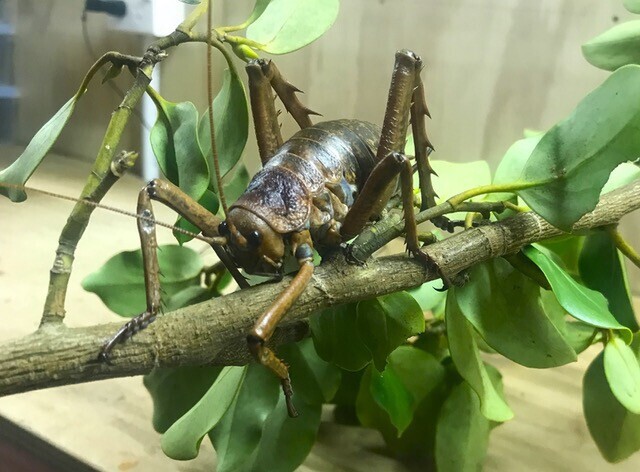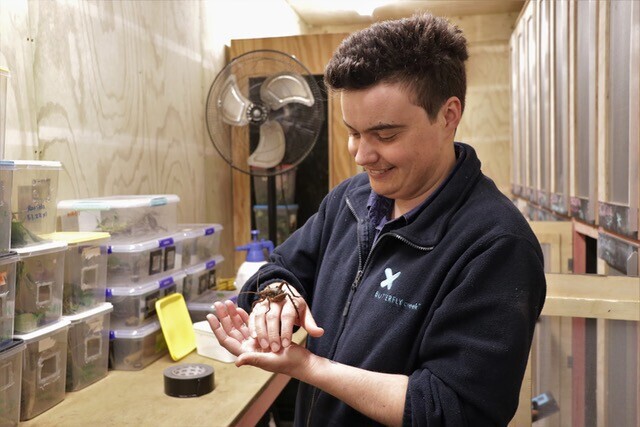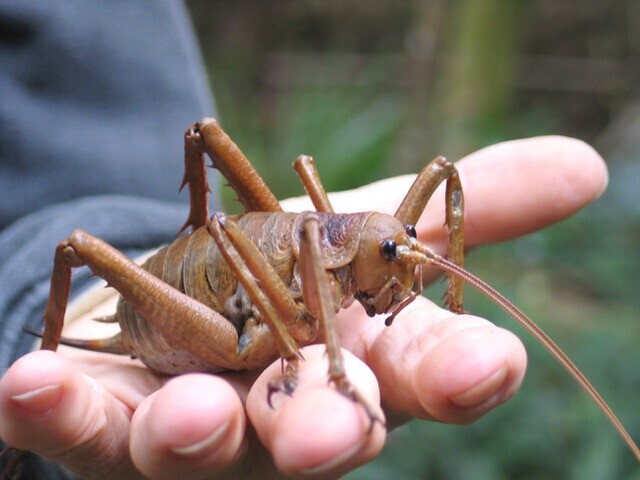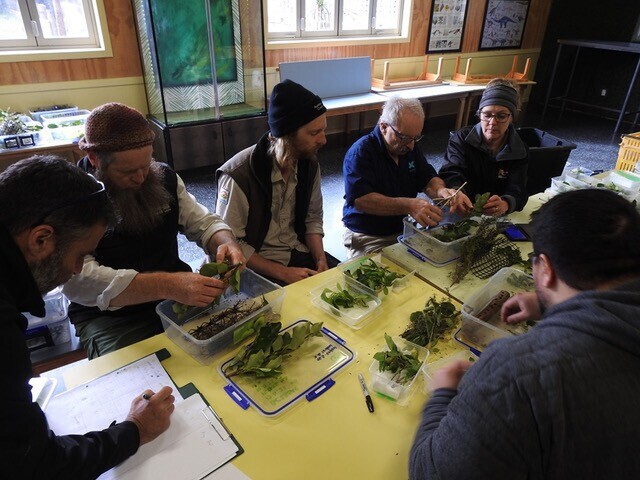An adult wētāpunga
On an otherwise nondescript day in 2009, a small boat carrying 12 important boxes left Te Hauturu-o-Toi / Little Barrier Island destined for mainland Auckland. Contained within each box was a single member of New Zealand's most iconic invertebrate species - the Little Barrier giant wētā / wētāpunga. These twelve animals (6 male, 6 female) were to form the basis of an ambitious new project - the wētāpunga recovery program pioneered by Butterfly Creek.
Once widespread across the mainland from Auckland northwards, introduced predator species and habitat loss had caused the near extinction of the species, which clung to life solely on Little Barrier. Their existence was once again threatened by the occurrence of predators on the island, which sparked the first murmurings of a breed to release captive program with the aim of creating additional, secure populations to guarantee long term safety of the species.
Butterfly Creek Keeper Lawrence White working in the purpose-built wētāpunga enclosure
A wētāpunga up close
Butterfly Creek - home at the time to the wētā expert Paul Barrett – agreed to take on the challenge. Over the subsequent years, Butterfly Creek worked to establish populations across the Hauraki Gulf, including on Tiritiri Matangi island, where the species is now sufficiently widespread to be sighted by lucky island visitors.
To this day, Butterfly Creek remains at the forefront of the wētāpunga breed to release program, with new and exciting plans for the species underway, including the establishment of the first two mainland release sites. In late 2022, Butterfly Creek released 400 juvenile wētāpunga (nymphs) split between Shakespear and Tāwharanui regional parks, followed by multiple additional releases of a similar size.
Preparing for the wētāpunga release
The largest release to date was completed in early 2024, with an incredible 1,400 nymphs dispersed into the sites over a single day. Butterfly Creek remains dedicated to establishing and supporting these populations, boosting numbers and genetics with continued releases, and offering assistance with on-site monitoring.
Butterfly Creek, a privately owned facility has funded this programme since it’s inception necessitating a very significant investment by way of direct funding as well as an enormous commitment by way of specialised staff time. As such we are very grateful for the generous financial contribution provided by The Jenkins Foundation which assists us in our efforts to breed and repopulate this special and iconic invertebrate.



